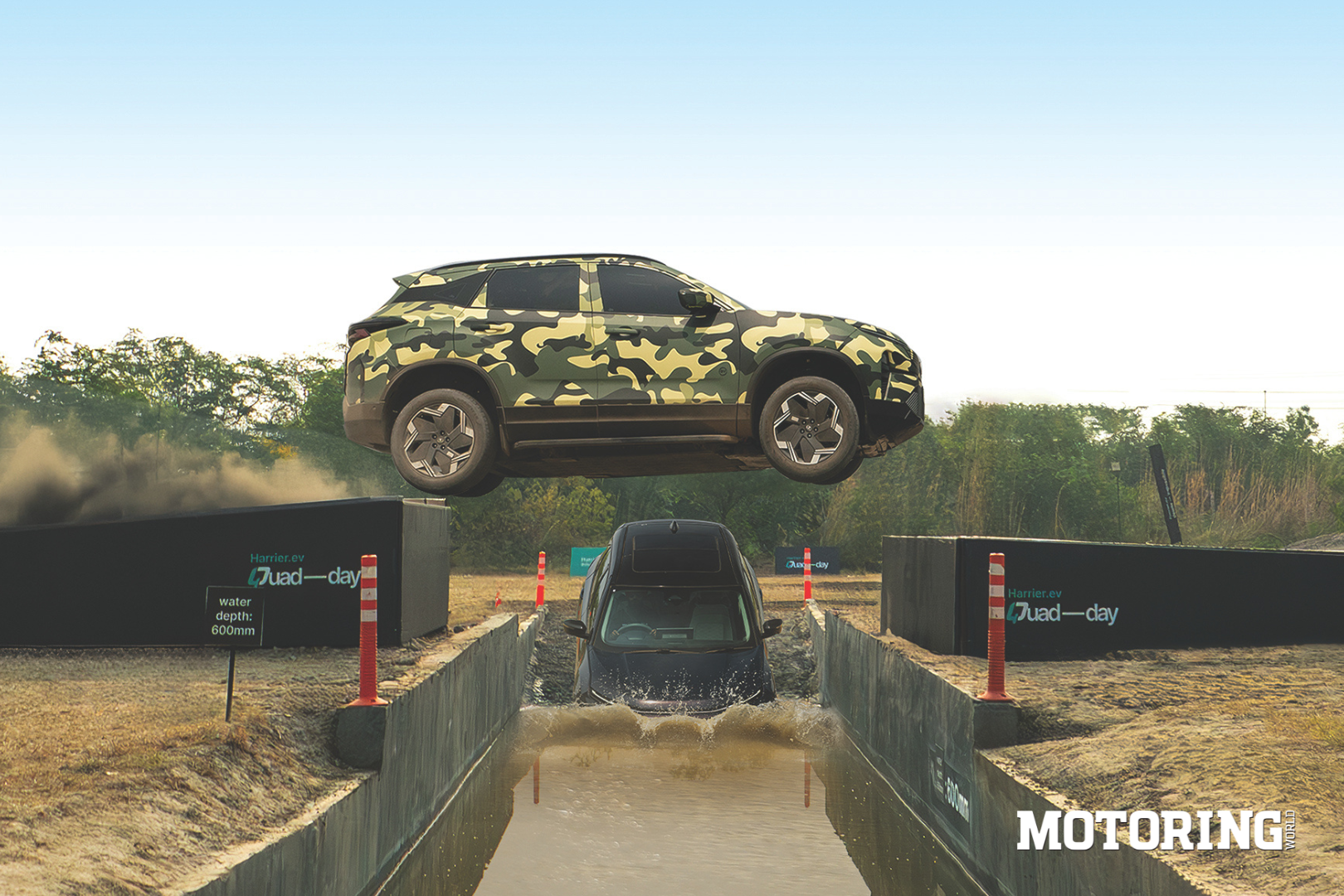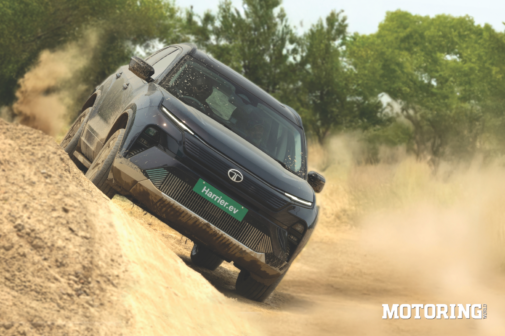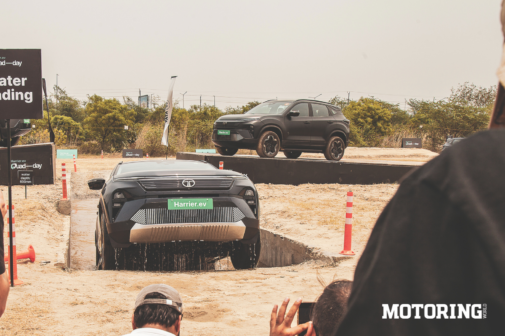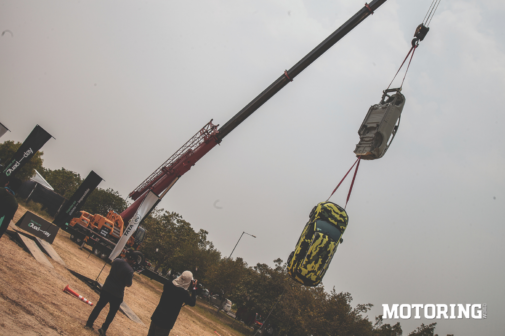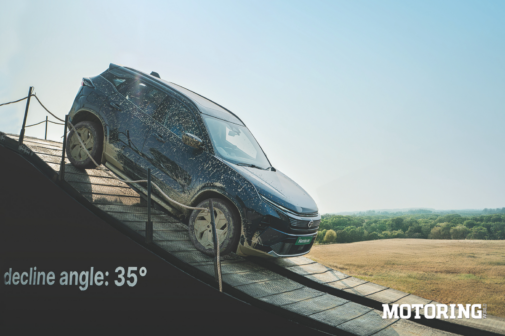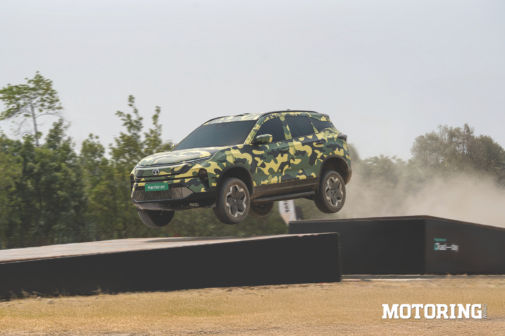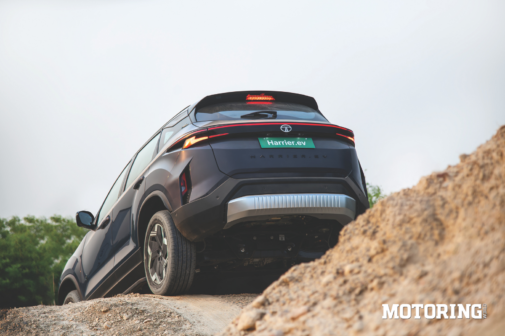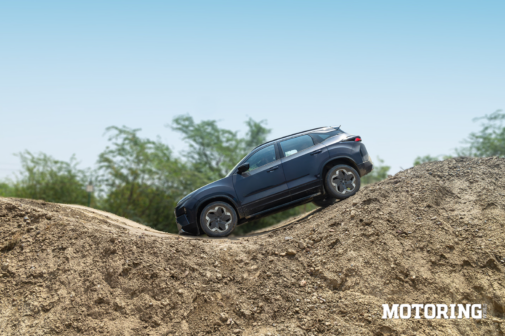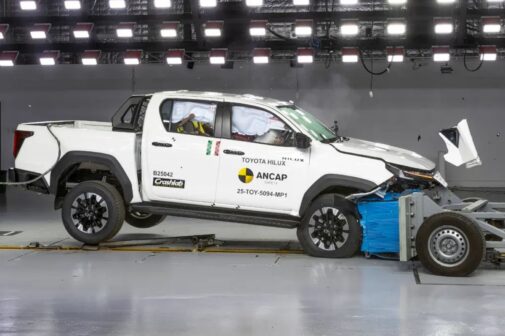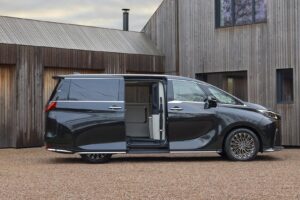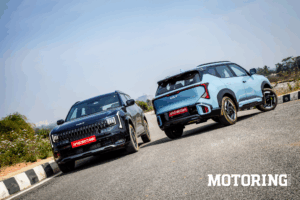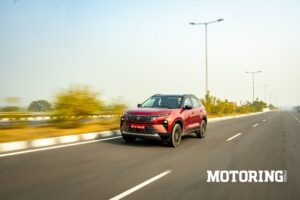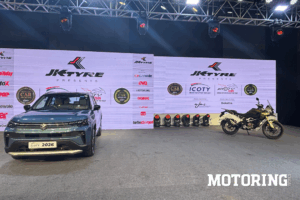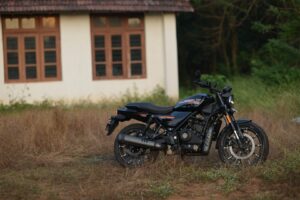Tata might have made us all wait — eagerly and anxiously — for the all-electric Harrier.ev, but by the looks of it, it has been worth the wait. It took them quite a while after letting the world know about the chances of such a model, to finally bring out what can definitely be the turning point in the EV SUV space. Curiously, Tata Motors didn’t choose the usual scenic test drive route for this meet but rather a circuit that has hosted world championship rounds for both Formula 1 and MotoGP in the past. We report live from the Buddh International Circuit.
Before I tell you what we think about the Harrier.ev from the limited time we got with the car — don’t worry a full road test is scheduled to happen very soon — we must recapitulate what the all-electric SUV has in store for the new buyer. The biggest draw has to be the dual-motor all-wheel-drive setup, which has a combined output of just under 400 bhp and a thoroughly impressive peak torque figure of 51.49 kg-m. You can choose a standard single-motor model, too, but that’s a story for another day. Battery sizes differ, too, depending on the version you choose: 65 kWh and 75 kWh.
Tata started with a neat tablecloth-pulling trick, wherein a car’s sudden acceleration pulls a tablecloth without allowing the tableware enough time to fall. It’s usually performed with supercars as their mind-numbing acceleration seems perfect for something like this, but with 51.49 kg-m of torque, it’s clear that the Harrier.ev is no short on pulling power. As it turns out, no one told Tata about the Harrier.ev’s immense pull, so to further prove the SUV’s abilities, they brought one of Tata’s humongous armoured military vehicles.
Co-developed with DRDO, this was Tata’s WhAP 8×8 (WhAP stands for Wheeled Armoured Platform), ready to be towed by the Harrier. ev, on the back straight of an F1 circuit! Covered under camouflage itself, possibly hinting at future applications or maybe just to match the military vehicle, the Harrier.ev showed no resistance in pulling the heavyweight. People were shocked, jaws were dropped, but the Harrier. ev continued as if nothing happened.
Like I said, our time with the Harrier.ev was quite limited — this was more of an introductory experience rather than a full-fledged road test — but it was long enough to appreciate what this all-electric family SUV offers. A claimed 6.3 seconds is all it takes for it to hit 100 kph from rest, which isn’t just impressive given the size and weight of this thing, but also a bit unexpected considering the Harrier isn’t by any means marketed as a performance vehicle.
Around corners, it felt as expected: with its body roll con tained, if not entirely absent, it was stable, composed, and predictable. We can happily report that the sus pension and the onboard ESC have been calibrated to keep it out of embarrassing situations. Plus it feels more confident than its size might suggest.
That’s the brief idea about the Harrier.ev’s road manners, but considering this is effectively the only AWD version of the Harrier SUV you can buy, regardless of the powertrain, you might want to know how well it fares off the road, right? A specially designed off-road section was made for that, and this is where the Harrier.ev’s dual-motor AWD setup showed its true colours.
Up next was the axle-twister pit, a great test to see if a car can switch power between wheels, with one wheel not in contact with the ground, to get itself unstuck. The Harrier.ev’s instant torque and cleverly set up traction control left no doubt that it’s made for this sort of thing. Taking it up a notch, we also tested the car’s off-road cruise control, which allowed it to traverse boulders and ruts; one can steer and tap the brakes if required. The speed was set to 5 kph, which meant there was enough time to add corrective inputs, just in case… We can safely say there was no need for human intervention.
A steep 34-degree incline was made to look effortless by the Harrier.ev’s ample grunt, whereas its braking control while negotiating the descent was appreciable, too. The water-wading pit wasn’t as much a challenge as it was a display of Tata’s engineering and the Harrier. ev’s go-anywhere abilities. The latter was only complemented by driving on a difficult to manoeuvre right-angle bridge. There was even a short jump section, which the Harrier.ev had no problems in dealing with, either.
All in all, this experience helped us understand why it’s all right to be excited about the Harrier.ev. We will continue with how it is to drive and live with in the full review, but for now, this press meet has made it clear that the Harrier.ev is far from just another electric vehicle. It is a feature-rich and immensely capable SUV that will only further Tata’s success in the EV space.
The track day and pre-defined off-road course showed many of the SUV’s capabilities, often surpassing our expectations, and needless to say, it’s unlikely that a Harrier.ev will ever be subjected to extreme conditions as an everyday car. To be a successful product, it’ll need to have the right features, charging convenience, a comfortable ride and handling setup for public roads, and, most importantly, a solid real world range. We’ll come to that in the review, but from what we’ve seen Tata has added everything one can think of in the Harrier.ev: from performance, practicality, and safety, to even some segment-first features. These are exciting times, and there’s no doubt that cars like the Harrier.ev contribute a lot to that!





